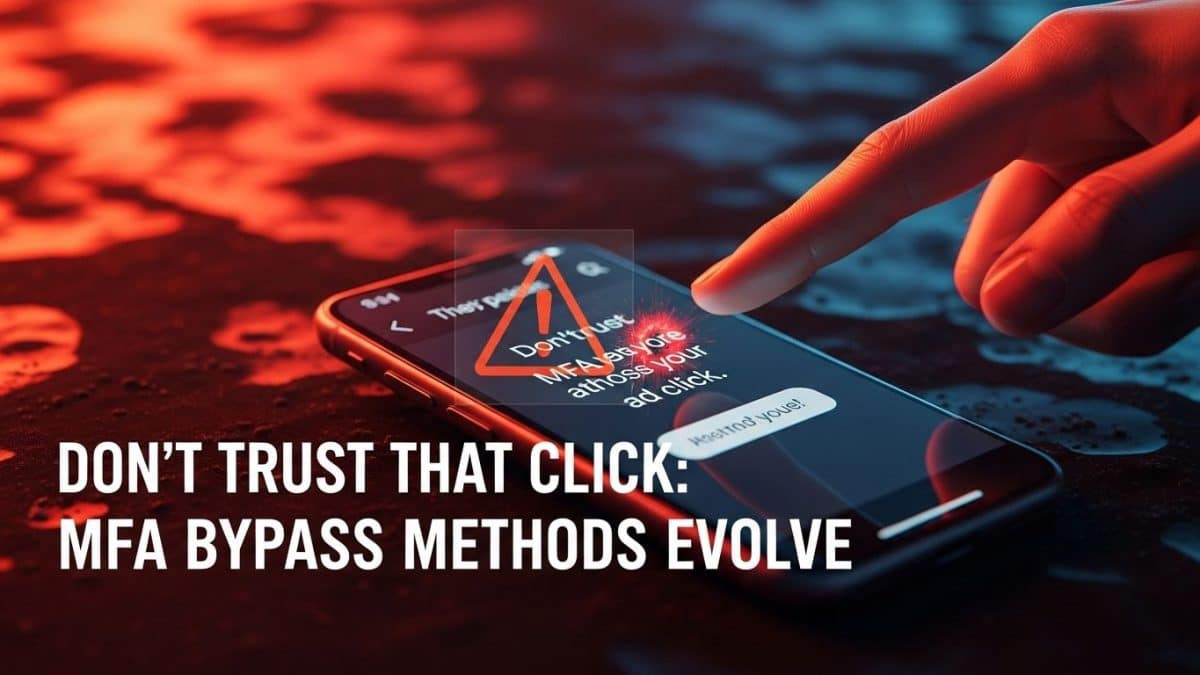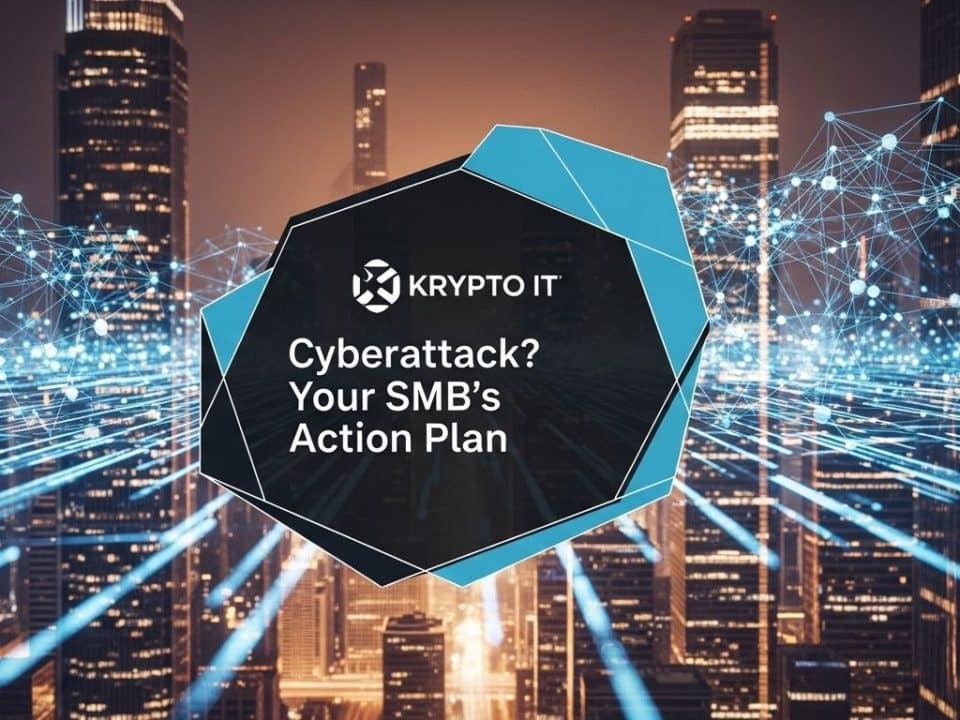
M&S Confirms: Social Engineering Led to Ransomware Attack
July 10, 2025
Cyberattack? Your SMB’s Action Plan
July 12, 2025Understanding How Attackers Are Undermining Your Multi-Factor Authentication
For years, Multi-Factor Authentication (MFA) has been a cornerstone of cybersecurity, a seemingly impenetrable second layer of defense against unauthorized access. The common wisdom has been: even if your password is stolen, an attacker can’t get in without that second factor – typically a code from an app, a fingerprint, or a physical key. However, a disturbing reality is emerging: the MFA you trust might be more vulnerable than you think. Cybercriminals are increasingly sophisticated, developing and deploying a range of tactics to bypass even seemingly robust MFA implementations. This evolution poses a significant threat to individuals and, crucially, to Small and Medium-sized Businesses (SMBs) in Houston that rely on MFA to protect sensitive data and systems.
The truth is, MFA isn’t a magic bullet, and relying on it solely can create a false sense of security. Understanding how attackers are successfully circumventing MFA is the first step in strengthening your defenses.
The Evolving Arsenal: How Attackers Bypass MFA
The methods used to bypass MFA are becoming increasingly clever and harder to detect. Here are some key techniques that are actively being exploited:
- Social Engineering (The Human Hack): This remains the most prevalent and often the most effective method. Attackers trick users into providing their MFA codes through phishing emails, SMS messages (smishing), or phone calls (vishing) that convincingly impersonate legitimate services, IT support, or even colleagues. Urgency, fear, and authority are common psychological levers used in these attacks. They might say your account has been compromised and you need to provide the code to secure it.
- MFA Fatigue (Bombing) Attacks: Attackers initiate a flood of MFA push notifications to a user’s device. The goal is to overwhelm the user into eventually tapping “approve” out of annoyance, hoping it will stop the incessant alerts, or simply due to a lapse in attention.
- SIM Swapping: By socially engineering mobile carriers, criminals can transfer a victim’s phone number to a SIM card they control. This allows them to intercept SMS-based MFA codes, effectively hijacking the second factor.
- Browser Extension Malware: Malicious browser extensions, often disguised as productivity tools or utilities, can be designed to intercept MFA codes directly from the user’s browser or steal session cookies that bypass the need for re-authentication, including MFA.
- Session Hijacking and Cookie Theft: Attackers can steal active session tokens or cookies from a user’s browser. If successful, they can often bypass both password and MFA requirements as the user is already authenticated. This can occur through malware or by exploiting vulnerabilities in web applications.
- Man-in-the-Middle (MitM) Attacks: Sophisticated phishing campaigns can employ MitM proxies. When a user enters their credentials and MFA code on a fake login page, the attacker intercepts this information in real-time and uses it to log in to the legitimate service before the user even realizes they’ve been phished.
- Exploiting Weak or Default MFA Implementations: Some older or poorly configured MFA systems might rely on less secure methods or have default settings that are easier to bypass. For example, relying solely on security questions as a recovery option can be weak.
- Compromising Backup Codes: If users store their MFA backup codes insecurely (e.g., in plain text files, shared documents, or easily accessible locations), attackers who gain access to their systems can use these codes to bypass the primary MFA method.
- Push Notification Manipulation: In some advanced attacks, threat actors might be able to intercept or manipulate push notifications, potentially even forging approvals in certain circumstances.
The Real-World Risks for Houston SMBs
The increasing success of MFA bypass attacks poses significant risks for SMBs in Houston:
- Account Takeovers: Even with MFA enabled, employee or customer accounts can be compromised, leading to data breaches, financial fraud, and operational disruption.
- Business Email Compromise (BEC): Attackers who bypass MFA on an executive’s email account can launch highly convincing BEC scams, leading to significant financial losses.
- Ransomware Deployment: Compromised accounts with bypassed MFA can provide attackers with the initial access needed to deploy ransomware across your network.
- Data Breaches and Compliance Issues: Access to sensitive data through bypassed MFA can trigger data breach notification requirements and potentially lead to regulatory fines.
- Erosion of Trust: If customer accounts protected by MFA are compromised, it can severely damage your brand reputation and erode customer trust.
Fortifying Your Defenses: Layering Security Beyond the Click
While the threat of MFA bypass is real, it’s crucial to understand that MFA still significantly enhances security when implemented and maintained correctly. The key is to adopt a layered security approach that goes beyond simply enabling MFA:
- Choose Stronger MFA Methods: Opt for more secure MFA methods than SMS-based codes. Authenticator apps (like Microsoft Authenticator or Google Authenticator), hardware security keys (like YubiKey), and biometric authentication offer greater resistance to many bypass techniques.
- Implement Conditional Access Policies: Leverage conditional access features to enforce MFA based on factors like device health, location, and user behavior. This adds a layer of contextual security.
- Relentless Security Awareness Training: Educate your employees extensively and regularly on the various MFA bypass tactics, particularly social engineering and MFA fatigue. Teach them to be extremely cautious about approving unexpected MFA requests and never to share their codes over the phone or in response to unsolicited emails or texts.
- Enable MFA Fraud Alerts and Reporting Mechanisms: Ensure your MFA solution has fraud reporting features and that users know how to report suspicious activity.
- Secure MFA Recovery Options: Review and secure your MFA recovery methods. Avoid relying solely on insecure options like security questions.
- Implement Robust Endpoint Security: Endpoint Detection and Response (EDR) solutions can help detect and prevent malware that attempts to steal session cookies or intercept MFA codes.
- Strengthen Password Policies: Encourage the use of strong, unique passwords, ideally managed by password managers. While MFA is a second layer, a weak first layer still presents a vulnerability.
- Monitor for Anomalous Activity: Implement security information and event management (SIEM) or other monitoring tools to detect unusual login attempts, logins from suspicious locations, or patterns indicative of MFA fatigue attacks.
- Stay Informed and Update Regularly: Keep your MFA solutions and all related software up to date with the latest security patches. Stay informed about emerging MFA bypass techniques and adjust your defenses accordingly.
The promise of MFA as an unbreachable security measure is being challenged by increasingly sophisticated attackers. For Houston SMBs, recognizing these evolving threats and adopting a layered security strategy that prioritizes user education, stronger authentication methods, and continuous monitoring is crucial to ensuring that the MFA you trust is actually protecting your valuable assets.
Don’t let a false sense of security leave your business vulnerable.
Contact us today for a consultation on strengthening your MFA implementation and building a resilient, multi-layered security posture.




